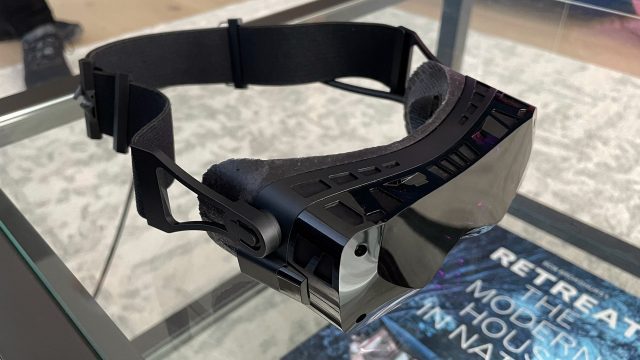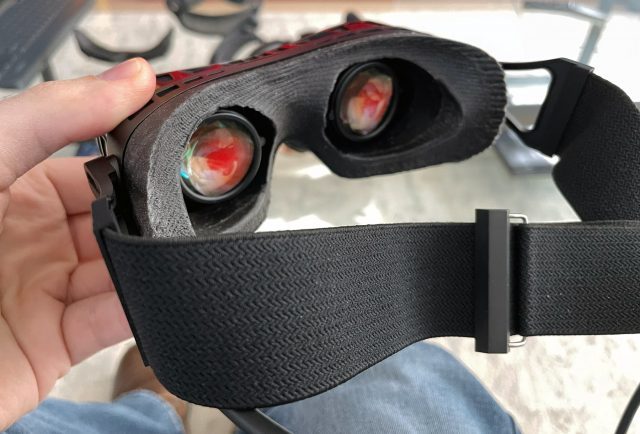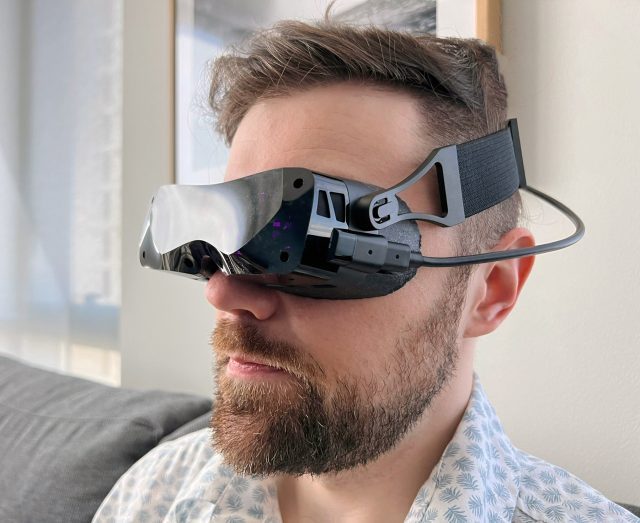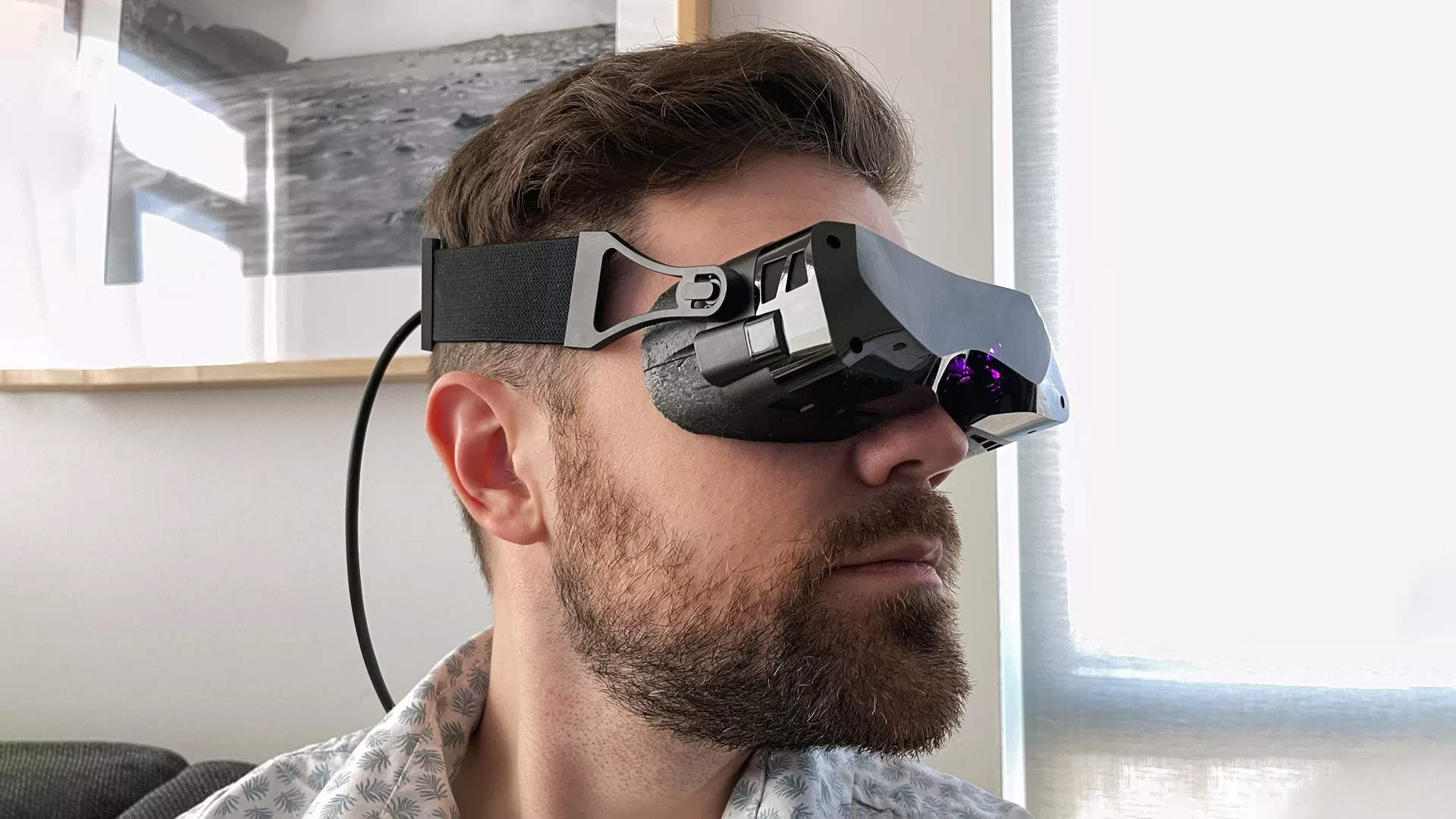It’s exceedingly uncommon to see a virtual reality software start-up change to making hardware, let alone respectable components. Yet that is actually exactly what Bigscreen– developers of the long-running social VR theater application of the exact same label– has made with its upcoming Beyond headset.
Bigscreen has actually plainly targeted computer VR enthusiasts that want to spend for the most ideal hardware they may receive their hands on. And also with primary players like Meta and HTC centering heavily on standalone headsets, Bigscreen Beyond can confirm to be the most ideal option they’ll find at any time soon.

| Bigscreen Beyond Specs | |
| Settlement | 2,560 × 2,560 (6.5 MP) per-eye microOLED (2x, RGB stripe) |
| Pixels Per-degree (stated) | 28 |
| Refresh Cost | 75Hz, 90Hz |
| Lens | Tri-element pancake |
| Field-of-view (professed) | 93 ° H |
| × 90 ° V Optical Adjustments | IPD (corrected, individualized per consumer) eye-relief (fixed, customized per facepad) |
| IPD Adjustment Variety | 58– 72mm (dealt with, solitary IPD value every unit) |
| Connectors | DisplayPort 1.4, USB 3.0 (2x) |
| Extra Ports | USB-C (1x) |
| Cable television Duration | 5m |
| Tracking | SteamVR Monitoring 1.0 or 2.0 (external flares) |
| On-board Cameras | None |
| Input | SteamVR Tracking operators |
| On-board Audio | None |
| Optionally available Sound | Audio Band add-on, USB-C audio result |
| Microphone | Yes (2x) |
| Pass-through sight | No |
| Body weight | 170– 185g |
| MSRP | $1,000 |
| MSRP (along with tracking & controllers) | $1,580 |
Customized
Bigscreen is creating one thing distinct, pretty actually– every Beyond headset comes with a custom-built facepad. And this isn’t a ‘opt for one of 3 possibilities’ condition, Bigscreen has a streamlined app that strolls customers with the method of capturing a 3D scan of their skin so the company can develop a totally special facepad that satisfies each particular customer.
And also it really helps make a distinction. The first thing that Bigscreen chief executive officer Darshan Shankar revealed me in the course of a trial of hereafter headset was actually the distinction between my private facepad (which the company developed for me prior to our meetup) and also another person’s facepad. The variation was immediately evident; where mine match versus my face just about like pair of linked puzzle-pieces, the various other facepad unclearly differed with my skin in a variety of places. While I’ve identified for a number of years that various face topology coming from person-to-person is actually a genuine consideration for VR headsets, this made me value even more exactly how substantial the distinctions may be.

Shankar says the custom-fit facepad is actually an important part of making such a tiny headset. It makes sure certainly not just that the headset is actually as relaxed as it could be, but likewise the individual’s eyes are specifically where they are actually intended to become when it come to the lenses. For a headset like Beyond, which utilizes high magnifying pancake optics along with a small pleasant spot, this is actually specifically vital. And, as Shankar convincingly displayed through radiating a flashlight all around the headset while I was using it, the custom-fit facepad suggests definitely no exterior light can be found coming from inside.
As well as the personalized facepad isn’t the only way each headset is actually called in for every specific customer; instead of squandering body weight as well as area with the auto mechanics for an IPD correction, the headset ships with among 15 dealt with IPD proximities, ranging from 58– 72mm. The company chooses the IPD based on the exact same face scan that permits them to create the personalized facepad. And given the measurements of hereafter headset, there is actually no other way that glasses will match inside; fortunately the provider is going to also offer magnetically fastened prescribed inserts for those that require them, up to − 10 diopter.
Diving In
Along with my personalized facepad conveniently broke onto the headset along with magnets, it was actually opportunity to study virtual reality.
The baseline variation of the $1,000 Bigscreen Beyond headset has an easy gentle strap, which I tossed over the back of my head and also firmed up to try. I experienced I needed to wear the strap incredibly high up on the back of my go to a great grip; Shankar claims an optionally available top-strap will definitely be on call, which must permit me to put on the rear band in a reduced posture.

As I place on the headset I located myself partaking a dark Bigscreen movie theater setting, and the quite first thing I noticed was the excellent nighttimes as well as vivid different colors that are actually with the help of the headset’s OLED displays. The second point I noticed was there was no audio! That’s given that the baseline version of the headset does not possess on-board sound, so I still had to place on a set of earphones after the headset was actually donned.
While the standard headset does not have on-board sound, Bigscreen is delivering a $100 ‘Sound Band’, which is an inflexible headstrap with integrated sound speakers. As a person who really values firm bands as well as on-board audio, I rejoice to see this as an alternative– for me it would certainly be the noticeable choice. Regrettably the company had not been prepared to demo the Audio Strap.
Shankar explored me around a handful of virtual reality atmospheres that showed off the headset’s 2,560 × 2,560 (6.5 MP) per-eye screens, which delivered an amount of clearness comparable to that of Varjo’s $2,000 Aero headset, yet along with a smaller sized particularly field-of-view (Bigscreen insurance claims 90 ° H × 93 ° V).
On lots of current-gen headsets like Pursuit 2 you can’t very observe the personal lines of the screen-door impact, but it is actually still crystal clear that it’s there in aggregate. While hereafter headset isn’t ‘retina settlement’ there is actually generally no documentation of any type of screen-door effect. Whatever appears truly sharp. This was actually most effectively illustrated when I rollicked in Half-Life: Alyx and also the video game thought that it had instantly updated graphics contrasted to a headset like Shutoff’s Index.
There is, however, some persistence beclouding and also glare. Shankar openly demonstrated just how the brightness of the screen directly relates to the degree of perseverance. While there’s some recognizable perseverance at the nonpayment illumination, when overdriving the screen’s brightness the tenacity comes to be entirely unbearable. The reverse holds true; turning the brightness down under the default reduces the persistence down significantly. While it would certainly be nice if the nonpayment brightness possessed much less perseverance, at least users will certainly be able to trade brightness for lesser determination based upon their particular inclination.
